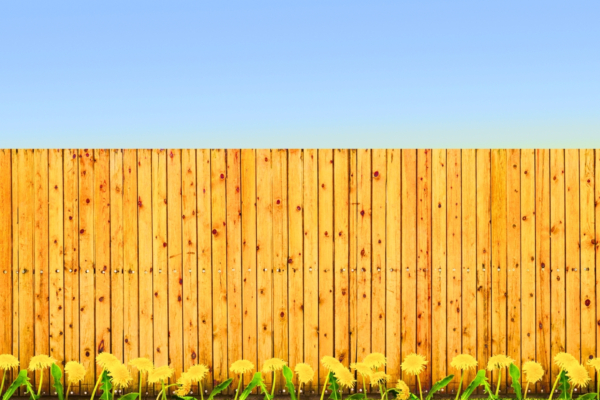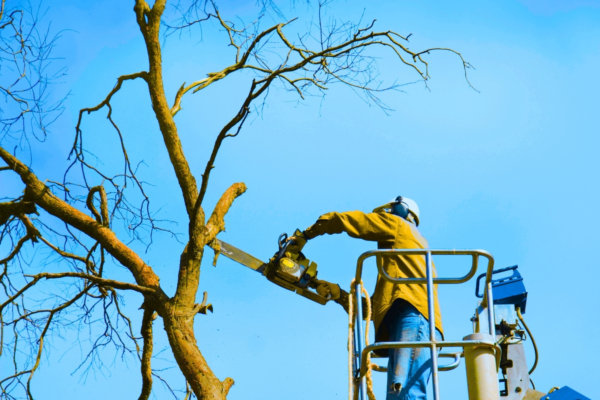
A Beginner’s Guide to Xeriscape
If you live in a dry area like Texas, you may have resigned yourself to brown, dead grass and a barren backyard. You may see the lushly landscaped yards of people in different climates and believe that such a yard is not in the cards.
But why give up when you can learn to xeriscape and create a thriving, backyard oasis even in a dry landscape? Read on to learn more about your next home improvement project.
What Does Xeriscape Mean?
The term “xeriscape” was coined by the City of Denver’s water department during a period of extended drought. Xeriscaping is a landscaping philosophy that focuses on cultivating landscapes in hot, dry climates. When you xeriscape, you utilize drought-resistant native plants and maintain them in a way that uses as little water as possible. In places like Texas, xeriscaping can facilitate water conservation in areas that frequently struggles with droughts.
Xeriscape 101: What Are the Fundamental Principles?
Over the years, the process of xeriscaping has been refined and customized to meet the needs of local climates. In this section, we will discuss xeriscaping as it relates to Texas homeowners, but these principles can easily translate to any desert climate.
Prioritization of native plants
To successfully xeriscape, you must choose plants that can thrive in the climate. Choosing xeric or drought-resistant plants is a crucial first step. The most commonly known xeric plant is the cactus, which has evolved to have many physical qualities that conserve water and thrive in desert climates.
But cacti are by no means the only xeric plants available. You can still cultivate a diverse array of plants in your xeriscaped backyard by incorporating agave, lavender, sage, and more.
Lawn reduction
Grassy lawns are very thirsty- they require a ton of water. Because of this, xeriscaping’s core principle is minimizing the amount of lawn space and being strategic about the placement of the little lawn space you do have.
Efficient irrigation
The principles of xeriscaping do not require you to avoid water altogether. But they require that you find more efficient ways to water plants. Perhaps the best approach is using a drip irrigation system that delivers water slowly on, or near, the surface of the soil. Compared to sprinkler systems, which can waste a lot of water, drip irrigation minimizes loss from wind, evaporation, and runoff.
This increases the amount of water you save. Since many people accidentally kill plants by overwatering, using an efficient irrigation system has the added benefit of preventing that from happening.
Soil improvement
To xeriscape, your soil must be primed to retain moisture and encourage healthy plant growth. Adding organic matter, such as compost, to your ground can help improve its quality.
Use of Mulch
Mulching is crucial because it absorbs water, minimizes evaporation, reduces weed growth, and helps prevent erosion.
How to Xeriscape Your Backyard
Now that we’ve explained xeriscaping principles, it’s time to translate that knowledge into actions.
Diagram Your Yard
Make a note of the size and shape of your yard. Consider drawing out a diagram so you can research plants and plan them visually before you start planting. Make a sun chart by recording where the sun is shining in your yard every few hours.
This preparation will help you understand where to place different plants. Here are some common Texas xeriscape styles to inspire you.
Analyze and adjust your soil
As mentioned before, your soil needs to be able to retain moisture and promote healthy plant growth. The ground that is currently in your yard may not be sufficient for xeric plants to thrive.
You should purchase a soil test kit to see the makeup of organic matter in your soil and determine whether or not you need to add more organic matter. Each plant has a preferred range of pH levels, soil types, and nutrient levels. Knowing this can help you plan what plants to purchase.
Know the climate and what plants are native.
Look up your area’s Hardiness Zone on the USDA website to determine which plants are most likely to thrive in your yard. Research the average rainfall in your area and use this information to inform what plants you choose.
Plant selection is key. There are many plants used to xeriscape in Texas, including shrubs, flowers, grasses, and more. Check out some Texas xeriscape plant options here.
Arrange your plants in layers
In a xeriscaped yard, there are three zones, or layers, of plants. Understanding them is crucial to know how to map out your yard.
The first zone is the oasis zone. This zone is full of bright species that are suited to the local conditions. Oases zones should be placed closer to the house, where they can benefit from runoff from the rooftop and gutters.
The second zone, which should surround the oasis zone, is the transition zone. The plants in this zone should have low water requirements.
The third zone is the arid zone, which has low water retention. This should be populated by low-maintenance and drought-tolerant plants. Arid zones should be farthest from the house in areas with little foot traffic.
Plant lawns wisely
If you must plant a lawn, plant it near an oasis zone to reduce the water it needs. Also, be smart with your grass selection.
- Warm-season grasses, like buffalo grass, conserve a lot of water but do not hold up well to extended foot traffic. These grasses are suitable in areas that don’t need a lot of water and do not get a lot of use, like a front lawn.
- Cool-season grasses, like Kentucky Bluegrass, require a lot more water, do better with foot traffic, and should be strategically placed in areas where children and pets play.
Add mulch
Mulch can help with moisture retention and prevent weed growth. Organic, wood-based mulch is good because it retains moisture, and as it decomposes, it improves soil over time. That said, mulch does need to be replaced every few years to avoid soil erosion or other similar issues.
Gravel does not need to be replaced but can absorb heat in sunny areas and be damaging to the plants. Whichever mulch you choose, apply 2-4 inches around plants, but avoid direct contact with stems.
Install irrigation
Install drip irrigation to deliver minimal amounts of water directly to plants to avoid water waste. This approach exposes the roots to a direct supply of water through drip emitters that release water slowly and steadily. You can DIY a drip irrigation system or purchase a kit at most local home improvement stores.
Xeriscape Maintenance
All of this work is useless if your xeriscaped backyard is not appropriately maintained. If you must use a sprinkler, try to use one that emits less water and has a rain sensor so that it does not operate on rainy days. Know that it takes time for plants to become drought-tolerant once they’ve been established, so you should expect to water more than usual the first year or two to develop deep roots.
You will also want to avoid over-fertilization, remove weeds regularly, monitor irrigation systems, and replace your chosen mulch. When you mow any lawn areas, use a sharp blade, and remove no more than one-third of the grass height.
So stop wasting money on landscaping projects that are fighting the environment instead of embracing it. You can xeriscape in Texas and impress all your friends by showing them that it is possible to turn a dull, brown backyard into a unique oasis.
Start Your Xeriscape Project Today
Fund your next landscaping project with a home equity loan from Amplify Credit Union.
